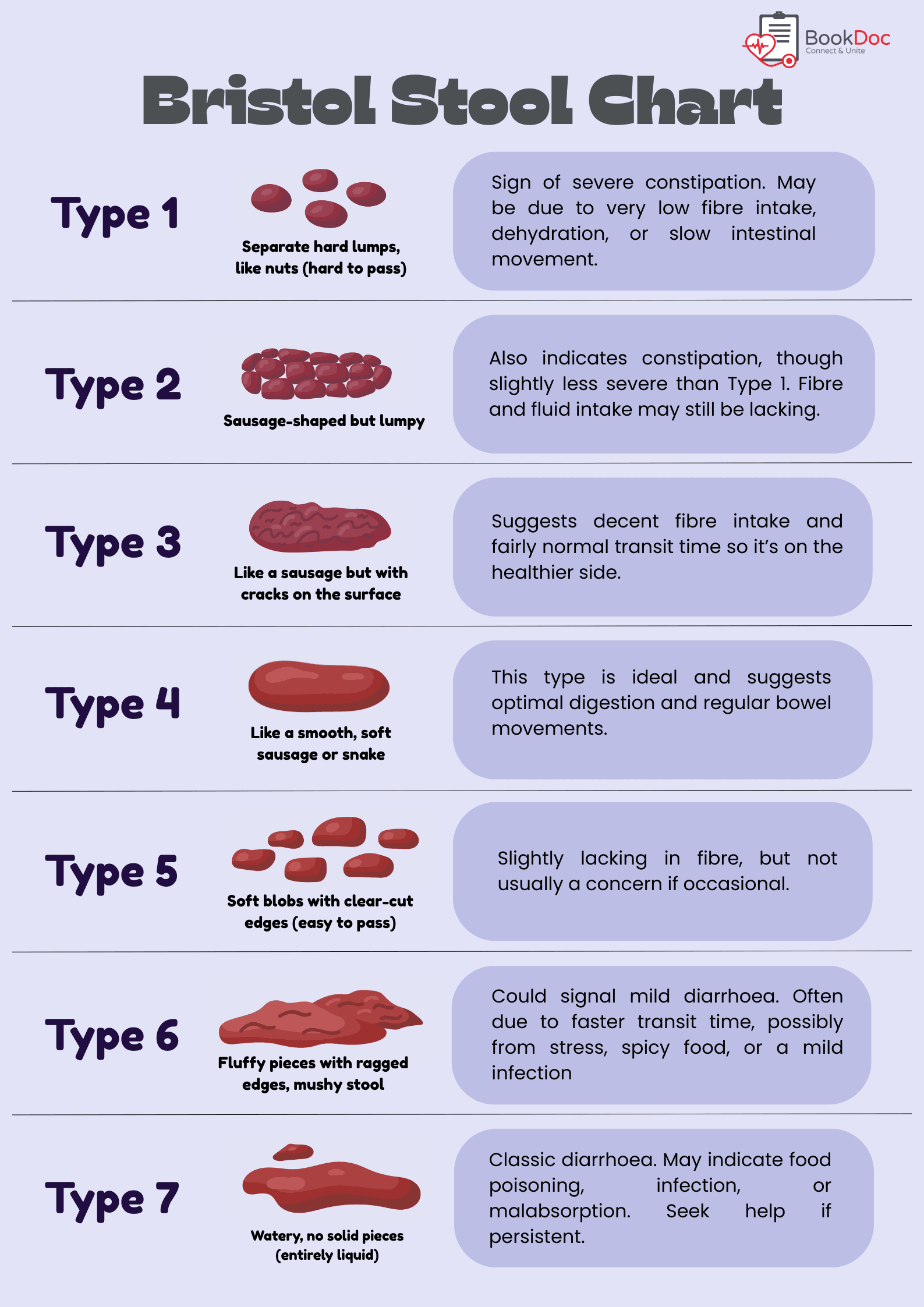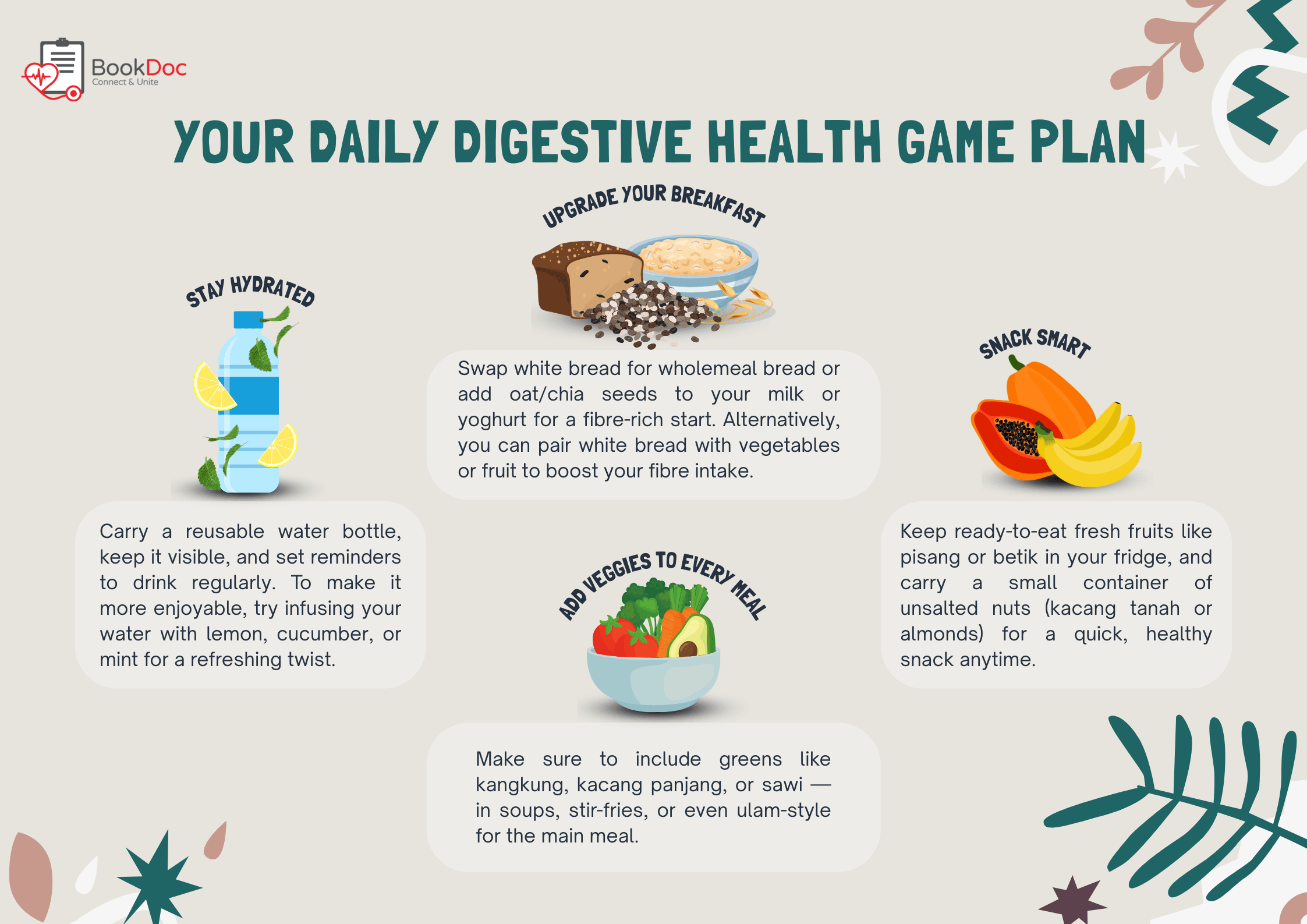Have you ever stopped to think about what your stool might be trying to tell you? Or maybe you haven’t given it much thought before? It might sound a bit icky, but stool is not just a waste product, it’s a powerful window into your digestive health, with its colour and shape offering important clues about how well your digestion is working. This World Digestive Day, let’s be brave and take a closer look at our digestive health by paying attention to what our stool says.
Understanding Nutrition Through Your Stool
A balanced diet with recommended portions of fibre, healthy fats, and hydration supports healthy digestion. This usually results in stool that is soft, well-formed, and easy to pass. On the flip side, a diet high in processed foods, sugar, fried items, and low in fibre or water can lead to constipation, diarrhoea, or irregular bowel habits.
To help assess stool quality, the Bristol Stool Chart, a widely used medical tool that classifies stool into seven types based on shape and texture: a

Even the colour of your stool tells a story, which is mainly influenced by bile:
- Brown: The healthy, normal colour. Bile breaks down fats, and as it moves through your intestines, it turns your stool brown.
- Pale or clay-coloured: It may suggest a problem with bile flow or fat digestion. This could be linked to very low intake of healthy fats or issues with the liver, gallbladder, or bile ducts.
- Green: This is often due to eating lots of leafy greens (like bayam or kangkung), or may indicate that food is moving too quickly through your digestive system, not allowing bile to be fully processed.
- Black or red: Sometimes caused by foods (like beetroot or dragon fruit) or iron supplements. But if it’s persistent, it could be a sign of bleeding in the digestive tract which needs to seek medical advice.
Fibre and Hydration: The Key to Smooth, Comfortable Digestion
Fibre adds bulk to your stool, helps it move smoothly through your intestines, and supports regular, comfortable bowel movements. There are two main types of fibre, soluble and insoluble:
- Insoluble fibre (found in local vegetables like kangkung and kacang panjang) adds bulk and helps prevent constipation by supporting the movement of food through the digestive tract.
- Soluble fibre (found in fruits like pisang and whole grains like wholemeal bread) forms a gel-like texture in the gut and is fermented by digestive bacteria. This supports a healthy digestive environment and helps regulate stool consistency.
But fibre can’t work alone; it needs water to be effective. Hydration softens your stool and helps it pass easily. Without enough fluids, even a high-fibre diet can lead to bloating, gas, or hard, dry stools.

Your stool is a daily health snapshot — pay attention! Small dietary changes can make a big difference. And remember: if something seems off, get it checked out. Your digestive health matters, and good digestion starts with good nutrition.













